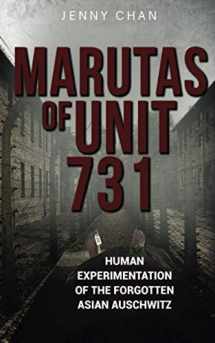
Marutas of Unit 731: Human Experimentation of the Forgotten Asian Auschwitz (Uncovering Unit 731)
Book details
Summary
Description
Euphemistically labeled as the "Water Supply and Prophylaxis Administration" and "HippoEpizootic Administration" of the Imperial Japanese Army, Unit 731 and Unit 100, as well as their subsidiary branches, performed human experimentation on the innocents under the leadership of Dr. Ishii Shiro. The Kempeitai, AKA, the military police captured any patriots for Unit 731's prison. The prisoners included Chinese patriots, civilians, Russians, and POWs. Although the exact number of victims is unclear since the Japanese destroyed most of the evidence at the end of the war, but it ranged from 3,000-250,000 innocent men, women, and children. The cruel experiments and medical procedures were carried out by the brightest medical students and staff.For the scientists to treat the prisoners less like humans, they called them "Marutas" or logs. The experimentations included their reaction to bubonic plague, typhoid, paratyphoid A and B, typhus, anthrax, smallpox, tularemia, infectious jaundice, gas gangrene, tetanus, cholera, dysentery, glanders, scarlet fever, undulant fever, tick encephalitis, "songo" or epidemic hemorrhagic fever, whooping cough, diphtheria, pneumonia, erysipelas, epidemic cerebrospinal meningitis, venereal diseases, tuberculosis, salmonella, frostbites, and many other viruses and bacteria. To observe the real-time effects of these deadly diseases and bacteria, these prisoners were often subject to vivisections without the use of anesthesia. Then there was the ANTA testing ground where the human test subjects were exposed to bacterial weapons under field conditions. For example, to test weapons developed with gas gangrene, ten Chinese prisoners were tied to stakes from 10-20 meters apart, and a bomb was set off by electricity. All ten prisoners were injured by shrapnel contaminated with gas gangrene. Within a week, they all died in severe torment.The study of the pathogens was also conducted with human experimentation. Vaccines were then developed to protect the Imperial Japanese Army in case they were to face a total war where they employ the bacteriological weapons produced by Unit 731. In the case where a human experimental subject was exhausted from the experiments, they were to be killed one way or another. Some test subjects were handed potassium cyanides, while others had porridge with heroin.


We would LOVE it if you could help us and other readers by reviewing the book
Book review



